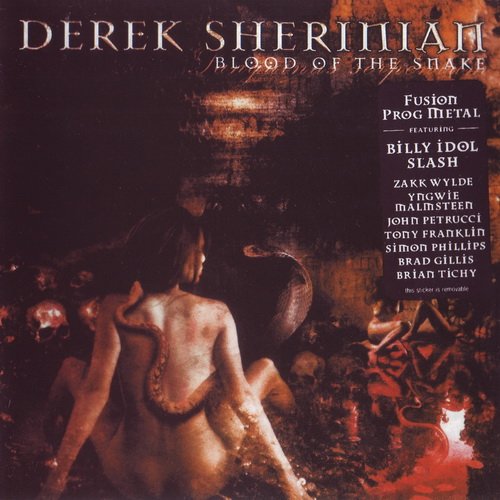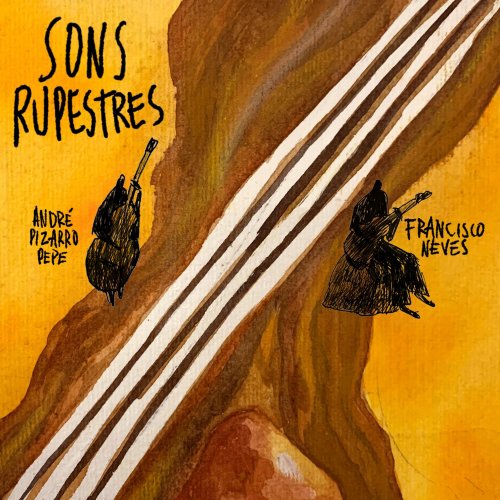Julia Sitkovetsky, Roger Vignoles - Rachmaninoff: Songs (2020) [Hi-Res]
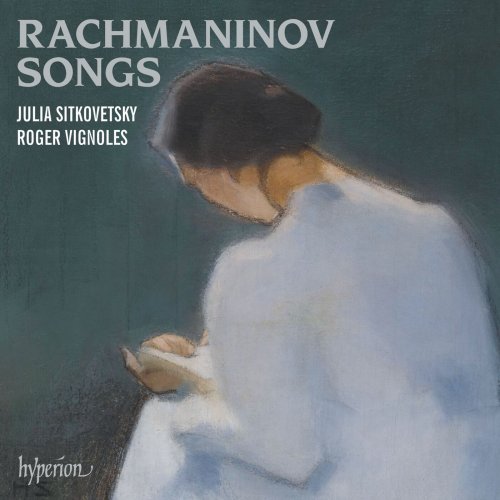
Artist: Julia Sitkovetsky, Roger Vignoles
Title: Rachmaninoff: Songs
Year Of Release: 2020
Label: Hyperion
Genre: Classical
Quality: flac lossless (tracks) / flac 24bits - 96.0kHz +Booklet
Total Time: 00:58:19
Total Size: 216 / 941 mb
WebSite: Album Preview
TracklistTitle: Rachmaninoff: Songs
Year Of Release: 2020
Label: Hyperion
Genre: Classical
Quality: flac lossless (tracks) / flac 24bits - 96.0kHz +Booklet
Total Time: 00:58:19
Total Size: 216 / 941 mb
WebSite: Album Preview
01. 6 Romances, Op. 38: No. 1, In My Garden at Night
02. 6 Romances, Op. 38: No. 2, To Her
03. 6 Romances, Op. 38: No. 3, Margaritki "Daisies"
04. 6 Romances, Op. 38: No. 4, Pied Piper
05. 6 Romances, Op. 38: No. 5, Son "A Dream"
06. 6 Romances, Op. 38: No. 6, A-u!
07. 6 Romances, Op. 4: No. 4, Do Not Sing to Me, Fair Maiden
08. 6 Romances, Op. 4: No. 5, O You, My Grain-Field
09. 6 Romances, Op. 4: No. 6, How Long, My Friend
10. 6 Romances, Op. 8: No. 3, Duma "Brooding"
11. 6 Romances, Op. 8: No. 5, Son "A Dream"
12. 6 Romances, Op. 8: No. 6, Molitva "Prayer"
13. 12 Romances, Op. 14: No. 11, Spring Waters
14. 12 Romances, Op. 21: No. 3, Twilight
15. 12 Romances, Op. 21: No. 5, Lilacs
16. 12 Romances, Op. 21: No. 7, How Fair This Spot
17. 12 Romances, Op. 21: No. 12, How Painful This Is
18. 15 Romances, Op. 26: No. 10, Before My Window
19. 14 Romances, Op. 34: No. 1, The Muse
20. 14 Romances, Op. 34: No. 12, What Happiness
21. 14 Romances, Op. 34: No. 14, Vocalise
Russians call the ‘art songs’ of their culture ‘romances’, in the same way Germans speak of ‘Lieder’ and the French of ‘mélodies’. The history of the Russian ‘romance’—at least in the understanding of most music-lovers who grew up in that culture—goes back to a specific time: the immediate post-Napoleonic moment in the early nineteenth century when Pushkin created modern Russian poetry, and his younger friend and colleague Glinka invented a distinctive Russian music … and then the two swiftly joined together to make songs.
By the 1860s in Russia, ‘romances’ of this kind had become ubiquitous, a flourishing national tradition, popular in aristocratic drawing rooms but finding an ever-growing place in concert halls. Nearly all composers wrote them, but the supreme contributors were Musorgsky and Tchaikovsky.
Just a few decades later, Rachmaninov was heir to both these composers, and to Glinka too. But importantly, he also brought to this now well-established synthetic art form new gifts and qualities: he greatly expanded the emotional range and technical possibilities of the romance, and he created a sumptuous new repertoire of over eighty songs, among the deepest and most beautiful achievements of the marriage of Russian music to Russian poetry.
At the heart of Rachmaninov’s achievement as a songwriter lies, of course, his legendary pianistic genius. His romances do not merely have piano accompaniments; their piano parts are masterpieces of keyboard elaboration in their own right, complex, luxurious, often almost orchestral. But this pianist was also a composer and conductor. He knew a thing or two about words, how they work and how they should be set for the human voice. This was for several reasons. He was deeply read, and passionately interested in literature. He was a master of written Russian in his own right, as we can see in his many private letters. He was a notably experienced conductor of operas and theatrical music, with a repertoire stretching from Gluck through Musorgsky, Tchaikovsky and Wagner to the newest music dramas by Rimsky-Korsakov and Debussy. He was the composer of three one-act operas of his own, as well as an unfinished full-length one. He was the creator of some of the greatest choral music of the early twentieth century. He was a marvellous accompanist of singers, and a hugely respected vocal coach (his close friend the great Chaliapin regarded him as supreme in this area). He was a composer of songs for voice and piano from his earliest student years.
Intriguingly, Rachmaninov’s songs represent exactly the first half of his more-than-half century of artistic work. His first known romance dates from the spring of 1890, just after his seventeenth birthday, and his final ones, including the Op 38 set, come from 1916, when he was forty-three—a songwriting career, then, of twenty-six years. In 1917, just after the Russian Revolution, he left Russia, never to return, and though he lived on in France, Switzerland and America until 1943, he never wrote another song. Thus another stretch—this time a songless one—of twenty-six years.
Julia Sitkovetsky and Roger Vignoles begin at the end of Rachmaninov’s romance journey, with his Op 38 of 1916—six songs composed when World War I was at its height and a year of revolutions was just around the corner. First sketches were made during a late-summer stay at a health resort in the North Caucasus mountains; they were then written up and completed over several weeks in his family’s country home of Ivanovka in Central Russia. While at the resort, the composer had run into an admired friend and colleague, the Ukrainian (later American) soprano Nina Koshetz. She, like Rachmaninov, was there for a health cure. Inspired by the folk-like colours of her rich and subtle voice—which you can still hear in recordings from later in her life—he set six poems by six different contemporary writers of the then fashionable Symbolist school, very different in tone from the high-Romantic poetry he had favoured earlier in his career.
We know Rachmaninov was looking for a new composing voice at this time. He had spent part of the previous year learning and performing the piano music of his fellow student and rival Alexander Scriabin, who had died suddenly early in 1915. Rachmaninov had always been open in his lack of sympathy towards Scriabin’s modernism (and his character), but, shocked by his death, he said he wanted to understand Scriabin’s newness better. Soon after, he asked the writer Marietta Shaginyan to introduce him to contemporary poetry of a kind with which he declared he was simply unfamiliar. All the texts of Op 38 were selected from what Shaginyan suggested to him.
The result turned out to be one of the composer’s richest and most harmonically and melodically experimental works, filled with his usual expressive hallmarks but given new wings, as it were, by complex and often unresolved chords, unexpected and strange rhythms, and daring tricks of vocal writing evidently inspired by Koshetz’s distinctive singing style. When he finished, Rachmaninov duly dedicated the set to Koshetz, who gave the first performances with him in the autumn of 1916. This deeply offended Shaginyan, who was hoping for the dedication herself, and she quickly got her own back by writing spitefully about Rachmaninov’s cavalier behaviour, and what she considered the unattractive ‘gypsy’ qualities of Koshetz’s voice and style of performance.
The first song sets a translation into Russian by Alexander Blok (to this day the best-loved of Russian Symbolist poets) of a brief lyric by the great Armenian writer Avetik Isahakyan. Dawn wipes away the night tears of a weeping willow in a garden.
There follows an equally compressed lyric by Blok’s friend Andrei Bely, author of the greatest Russian Modernist novel Petersburg. Filled with passion, the poet waits for his beloved in the evening, standing in a grassy garden soaked with dew.
In Margaritki (‘Daisies’), which sets words by another famous Symbolist, Igor Severyanin, the poet admires the flowers of the title and asks for them to be given a refreshing drink of dew. Rachmaninov later made a piano transcription of this song, performing it many times and recording it in America in 1940.
Krïsolov (‘Pied piper’), setting a Goethe-inspired ballad by Valery Bryusov (remembered for his novel The Fiery Angel, which Prokofiev turned into an opera), recasts the old tale of the child abductor of Hamelin as a light-hearted but erotically suggestive micro-drama in which the famous piper uses his flute to seduce a ‘pretty maiden’. Again the action takes place at night in a garden, this time one filled with ‘slender poplars’.
In Son (‘A dream’), Fyodor Sologub—another writer more famous for his novels—tells of a mysterious figure with ‘two immense wings / As light as / The shadow of midnight’. As in the previous song, the suggestion is erotic: within sleep’s ‘fathomless eyes’ are ‘many hidden pleasures’.
Evocative lyrics by a sixth Symbolist, the poet Konstantin Bal’mont, round out the set. Bal’mont is known to music-lovers for his colourful poems set by Stravinsky and Prokofiev, and for his translations of Edgar Allan Poe, which Rachmaninov used in what the composer himself thought his most important work: his choral and orchestral symphony The Bells. Here Rachmaninov takes a poem that neatly brings together ideas and implications from all five earlier songs in the cycle, including the alluring flute, the night, the natural world and flowers. Wandering through this carefully unifying landscape of significant symbols, the poet cries out to his vanished beloved: ‘A-oo!’ (Even today Russians use ‘A-oo!’ when they try to get your attention … rather in the manner of ‘Hell-oooo!’)
After their complete performance of Rachmaninov’s swansong as a romance composer, Julia Sitkovetsky and Roger Vignoles return to 1893 and the composer’s first published songs, his Op 4. From that collection of six they take the last three, opening with one of Rachmaninov’s most familiar recital numbers: his setting of Pushkin’s well-known lyric about ‘Those songs from the sad country of Georgia’, which had already been put to music by many other composers, including Glinka. This poem, familiar to Russians who often learn it by heart in school, was originally addressed to the beautiful Anna Olenina, one of Pushkin’s great loves (though she did not reciprocate his feelings). Apparently, Anna was fond of singing a tune still sung in Georgia today as a folk song (‘Akhal aghnago sulo’), but which was actually composed by the old Georgian poet Tumanishvili. Pushkin’s poem is both an affectionate imitation of Tumanishvili’s piece and a gentle mockery of what he called its ‘oriental nonsense’. Nonsense it may be, but Rachmaninov’s response to Pushkin’s own delicate orientalism is memorably sensual and languorous.
The next two songs take a poem in Russian folk style by the early nineteenth-century Count Alexei Tolstoy (a friend of Pushkin’s), to which Rachmaninov responds with an appropriately folk-coloured ‘Russian’ melody (in the manner of Balakirev or Rimky-Korsakov), and a melancholy verse by Musorgsky’s close friend and lyricist Count Golenishchev-Kutusov, which provokes from Rachmaninov a surge of romantic feeling.
Three songs follow from the composer’s next collection of six, Op 8, also from 1893, and all setting translations by the Russian poet Alexey Pleshcheyev from other languages. The tone throughout is of anguish, desolation and regret. Taras Shevchenko, national poet of the Ukrainians, asks himself: ‘I know not— / Do you live, my soul?’ The German poet Heinrich Heine (who inspired so many great German composers) mourns for the long-lost country of his childhood: ‘But that was [all] a dream!’ And another mighty German, Goethe, bitterly regrets his sins: ‘Oh, my God! / Look down on me.’
Rachmaninov’s next collection, his Op 14 from 1896, consists of twelve songs, in a wide variety of moods. Sitkovetsky and Vignoles choose the eleventh and most famous, Vesenniye vodï (‘Spring waters’), to an ecstatic lyric by one of the most important Russian poets of the mid-nineteenth century, Fyodor Tyutchev, in which he vividly describes the legendary suddenness of spring in the Russian countryside, when endless fields of snow melt into running water with the arrival of warm air in late April and early May.
Four songs follow from the next set of twelve, Op 21, mostly composed in a single two-week sweep in the spring of 1902. By this time, Rachmaninov had gained considerable experience as a conductor of opera, and, though most of these songs are brief (only a couple of minutes long), they have an operatic feel to them, describing not only a mood but a little scene or dramatic situation.
It is worth noting in passing that the songs of Op 21 were written just before Rachmaninov married his first cousin Natalia Satina. According to his biographers, he urgently needed money to pay for his honeymoon, and his publishers at the time paid well for songs like these, which could be expected to sell.
Sumerki (‘Twilight’) takes a Russian translation of a verse by the nineteenth-century French philosopher Jean-Marie Guyau: a young woman sits at her window in the evening, deep in thought, while stars hover above her head like a swarm of bees.
Siren’ (‘Lilacs’) sets another vivid description, like the poems in Op 4, of a garden in early morning, grass sodden with dew. A young woman, seeing ‘fragrant clusters’ of lilac-blossom hanging from green branches, imagines them as symbols of the elusive happiness for which she searches. The words here are by the little-known Ekaterina Beketova, whose sister Alexandra, also a writer, was the mother of the Symbolist Alexander Blok. As with his other flower-song Margaritki, Rachmaninov later made a famous piano transcription of this much-loved romance, performing it many times in recitals and recording it twice, in 1923 and 1942.
The author of the words of the next song was the Countess Glafira Einerling, who published watery verse and children’s literature under the pen name G Galina. The composer was criticized in his lifetime for setting such inferior poetry, but he was unrepentant and even returned to this writer’s words on several occasions. Evidently, her poems said what he needed to be said, though he was not afraid sometimes to change them to make them sound stronger and more dramatically specific. ‘How good it is’, begins the Countess. Rachmaninov opens more precisely: ‘Here it is good.’
The final song of Op 21 sets another of G Galina’s apostrophes: ‘How painful this is, yet how I yearn to live.’ As with his earlier sets, we see here how the composer unified the texts of his song collections to make the different numbers hang together thematically. So it is that in this one we return to nature, to spring, to the experiences of a young woman … and to lilacs.
Rachmaninov’s next set, his Op 26, comes from 1906 and the period shortly before he began his second symphony. This time there are fifteen songs and the range of writers is more serious. Count Alexei Tolstoy, Tyutchev and other favourites reappear, but there are new ones like Chekhov (a prose fragment from his play Uncle Vanya) and Ivan Bunin. The tenth song, however, turns again to the childlike lyrics of G Galina (Countess Einerling) and another nature/garden scene: ‘Before my window a cherry tree flowers.’
Julia Sitkovetsky and Roger Vignoles end with three romances from the Op 34 set of fourteen, composed mostly in 1912, but completed in 1915, during the early stages of World War I. The words of thirteen of these songs, as with his next and final set, Op 38, came from texts suggested to him by the writer Marietta Shaginyan. The first, a magnificent outpouring akin to an operatic aria, and dedicated to Shaginyan, sets a wonderfully subtle poem by Pushkin, written during the poet’s first exile in 1821, when he was sent to the far south of Russia. A long way from home, Pushkin meditates on how the urge to become an artist first came to him in earliest childhood, when his ‘muse’—and the image is deliberately erotic—‘would herself take the pipe from my hands’ and show how ‘The reed sprang to life at her divine breath’. As with his other famous Pushkin setting about ‘Those songs from the sad country of Georgia’ from Op 4, Rachmaninov makes the most of the musical suggestions in the words, beginning with the haunting sound of the imaginary flute.
The twelfth song of Op 34 sets a passionate love poem by one of Russia’s most important mid-nineteenth-century Romantics, Afanasy Fet. Rachmaninov’s five romances to words by Fet, all written at different times, show how drawn he was to this poet’s uninhibited floods of emotion. Over virtuosic keyboard-writing, vividly recalling the manner of this composer’s piano concertos, the soprano pours out her heart: ‘Oh, call me a madman! / Call me what you like: / In this moment my reason is weakening / And I feel such a tide of love within my heart.’
Last comes one of Rachmaninov’s most loved and evergreen numbers: his Vocalise, a song without any words at all. Originally written in 1915 as a self-standing number for voice and piano, this substantial piece—inspired by the extraordinarily delicate voice of the great soprano Antonina Nezhdanova, and less a romance than an arc of pure music, treating the voice as an embodied instrument—was quickly turned by the composer into a sumptuous second version for voice and symphony orchestra, in which form it had its first performance in Moscow in January 1916, sung by Nezhdanova and conducted by Serge Koussevitzky. Towards the end of World War I, in 1918, Rachmaninov reshaped it once more, this time as a work for orchestra alone, and it was this third variant that he recorded with the Philadelphia Orchestra in 1929—one of the very few surviving documentations of his mastery as a conductor.
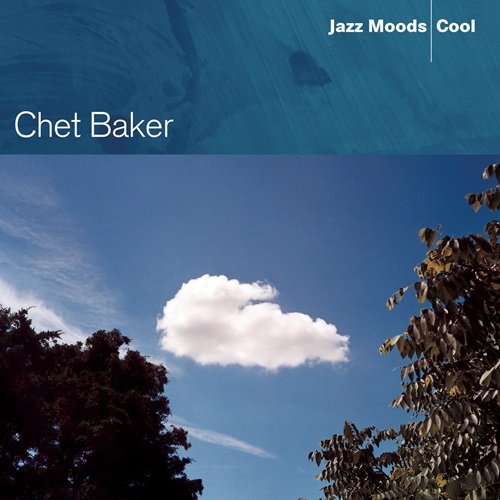
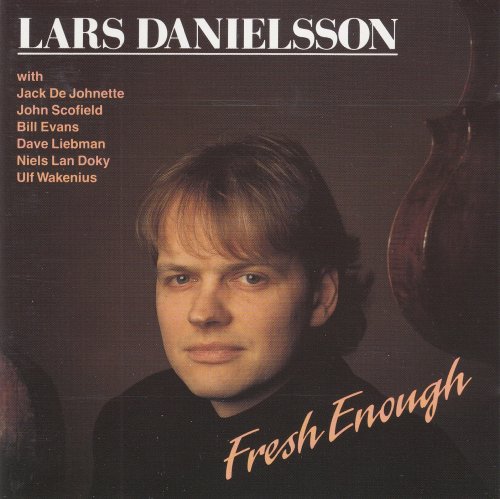

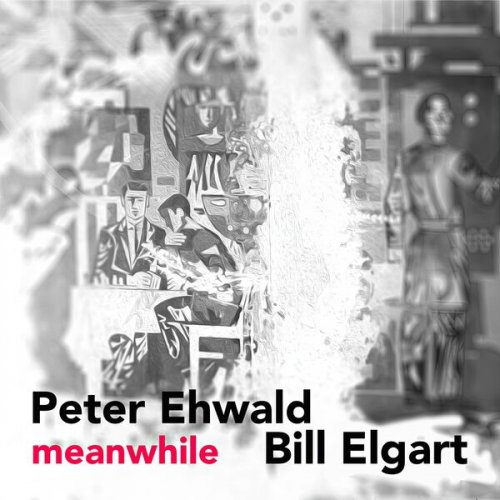
![Barre Phillips - Three Day Moon (1978/2025) [Hi-Res] Barre Phillips - Three Day Moon (1978/2025) [Hi-Res]](https://www.dibpic.com/uploads/posts/2025-12/1766322384_cover.jpg)
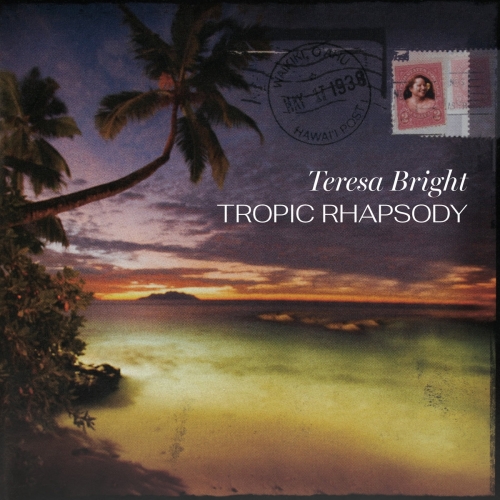
![Don Cherry, Nana Vasconcelos & Collin Walcott - Codona (1979/2025) [Hi-Res] Don Cherry, Nana Vasconcelos & Collin Walcott - Codona (1979/2025) [Hi-Res]](https://www.dibpic.com/uploads/posts/2025-12/1765970766_cover.jpg)
